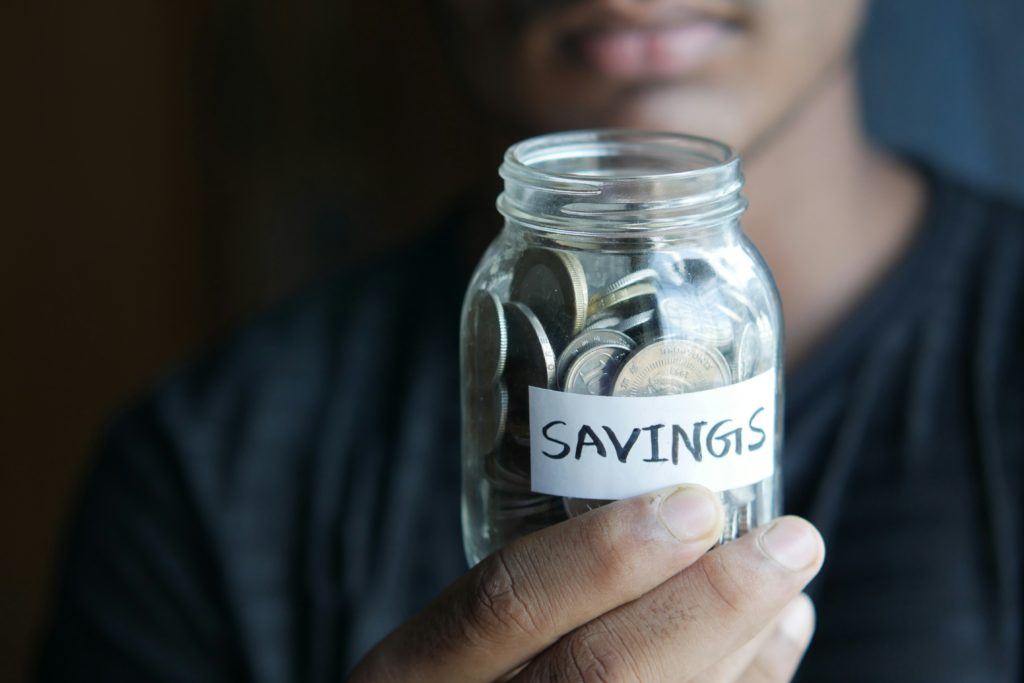Last year, I started tracking my expenses. I was in a stable job and position in my life and could start to think about how much I was earning, spending and saving.
Every month, I add up how much money I’ve spent. I divide the expenses into categories and also compare them to my income. I can see that I’m doing well in certain categories (like clothing and technology) but spending more in other areas (like takeout coffees).
It’s a useful exercise. But what does tracking your expenses have to do with sustainability? More than you might think.
Tracking your expenses for a sustainable lifestyle

We know that stuff has a serious environmental impact—I’m talking physical things like clothing, food, technology and cars. The production of consumer products requires natural resources and energy and is responsible for 45% of global greenhouse gas emissions. These items will also eventually need to be disposed of. Buying “green” products like those made from recycled materials helps, but the most important thing is to reduce our consumption.
A 2019 study found that reducing consumption (AKA buying fewer things) improved well-being and reduced psychological distress among young people. It makes sense when you think about it. Owning lots of things clutters your living space, and those things need to be maintained and look after (not to mention are expensive). The study found that proactive financial behaviours like budgeting and saving also improved well-being.
Tracking your expenses shows you how much money you’re spending and on what. You’ll notice any patterns in your spending. This data can then help you make decisions about changes to make. You might choose to cut down on certain unnecessary expenses, like that overpriced latte on the way to work. Ultimately, tracking your expenses (and setting an action plan based on that) helps you buy fewer things, reducing your carbon footprint.
How to track your expenses
The process for tracking your expenses will vary based on your lifestyle and preferences. However, here are the general steps to take.
1. Choose a frequency for tracking your expenses.
Different people like to track their expenses at a different frequency. You might choose to track your expenses immediately after shopping, daily at the end of the day, weekly, biweekly or monthly. I track mine monthly—I prefer to get it all done at once and to have a larger data set to look at. However, if overspending is an issue for you and you want more accountability, you could try tracking your expenses more often.
Whatever frequency you choose, set reminders to make sure you actually follow through on tracking your expenses.
2. Set up a tool or system for tracking your expenses.
There are different ways to track your expenses. If you prefer to track your expenses by hand, you can set up a notebook with columns for the date, the amount and the expense category.
I track my expenses using a spreadsheet that has columns for the different categories of expenses, then the totals for each category at the bottom. You can find free finance spreadsheet templates in these lists by MakeUseOf and Microsoft 365.
Alternatively, you may wish to use an expense tracking or personal finance app. If so, see CNBC’s list of expense tracker apps, which have different features, including automatic syncing up with your bank account and credit card so you don’t need to enter transactions manually.
3. Gather your documents.
Gather the records of your transactions. These will include bank and credit card statements and receipts. If you paid for something with cash and didn’t get a receipt, it can be helpful to either enter the amount that you’ve spent into your tracker right away or make a note so you don’t forget the amount.
4. Enter your expenses into your tracking tool.
Enter the expenses you’ve gathered into your tracker. Remember to include both fixed expenses like rent or mortgage payments and variable expenses like groceries.
As I’ve mentioned, it’s helpful to categorize your expenses so you can see where exactly your money is going. Some of these will be pretty standard, like groceries, transportation and entertainment. Others will be specific to you. For example, you might have expenses related to a hobby. You can look over your recent transactions to determine your categories, and of course these may change over time.
5. Enter your income (optional).
Though your income is not part of your expenses, including this information will help with the next step (analysis). Make sure to consider all sources of income, which might include your pay from work, government payments, loans or scholarships. Enter your income for the same time period that you’ve entered expenses for.
6. Analyze your spending.
There isn’t too much point in tracking your expenses if you don’t analyze them to get a better picture of how you’re spending your money. There are different ways that you can analyze your expenses: you can compare different categories of expenses to each other to see where you’re spending the most, or you can compare your expenses to previous periods to see whether your expenses have remained stable.
You can also divide your total expenses by your income to find out what percentage of your income you’re saving. A rule of thumb is to save 20% of your income (if that’s feasible for you). Note that expense tracking apps may do this kind of analysis for you.
Once you’ve taken a look at the numbers, you can make a plan to reduce your spending in certain categories—to help both your wallet and the planet.
Beyond tracking your expenses: Budgeting basics
Budgeting takes expense tracking one step further by making a plan for how you will spend your money (or not spend it, as the case may be).

There are different styles of budgeting. For example, the 50/30/20 rule divides your income into your needs (50%), wants (30%) and savings (20%). Zero-based budgeting gets more detailed, allocating a percentage of your income to each expense category. In the envelope method, you divide cash into envelopes that are labelled with different categories. Each month, you can only spend as much money as in the envelope.
To make a budget, think about your financial goals and your current income and expenses (that’s where the tracking comes in handy). Plan how much you can spend in the different categories to live within your means. Then it’s just a matter of sticking to your budget (easier said than done)!
Learn more about budgeting in this article by NerdWallet, or try this budgeting tool by the Government of Canada.
Cutting down on consumption by tracking your expenses
Tracking your expenses helps you see how much you’re spending in different categories. Combined with budgeting, this tool can help you cut down on your consumption, contributing to a sustainable, frugal lifestyle.
I want to know: Do you track your expenses? What does your process look like?
Categories and tags:
Share this post:

I still use paper and a calculator, but apps and spreadsheets sound interesting.
My sense is that being frugal (as opposed to cheap) is generally environmentally sound as well. Dollar cost is often a measure of the environmental costs of a product or service, be it energy, materials, or transportation. But don’t be cheap, like I was when I bought what looked like a good bag for carrying sheet music at a certain dollar store for $4.50 – it broke in a couple weeks. I then bought another, much better bag at a reputable independent store for $15 – cheaper in the long run, and less waste created.
Yes, I think that in general buying fewer things but buying good quality makes the most sense environmentally! I’m glad you found a better bag in the end.